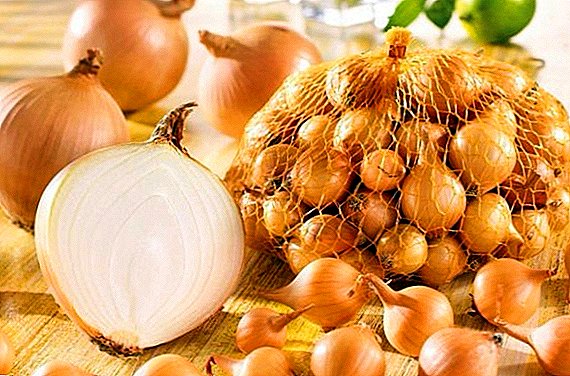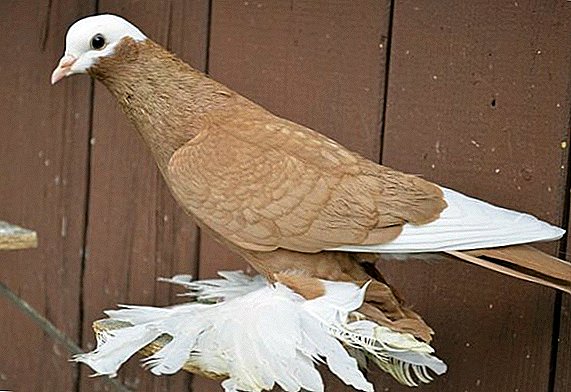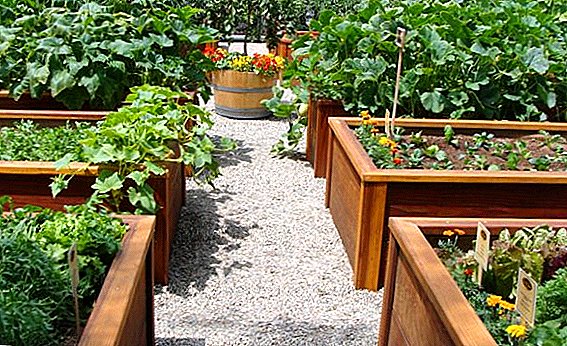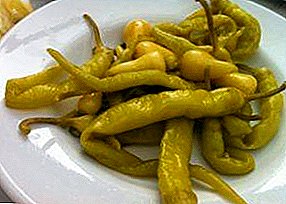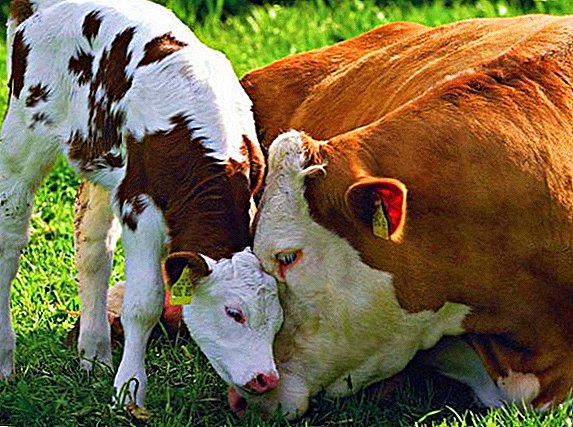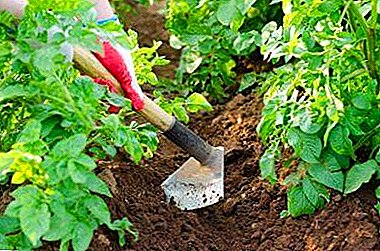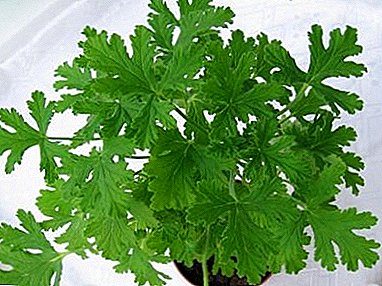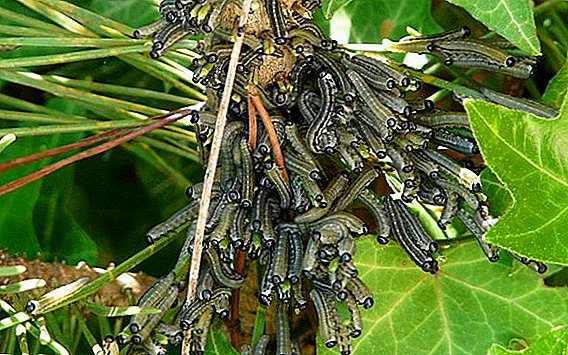 It is pleasant to walk through the pine forest - tall, slender trunks of the pines rise up, green crowns soothingly soothingly above, the air is filled with the smell of pine needles. Pine forest provides a person with quality wood and sap, he holds the soil together with its roots and increases the humidity around it, and its air is healing. Pine forest pacifies, brings peace and joy to the heart. Having planted several pines in your country house, you can create a small coniferous oasis for rest and rest, and it is very unpleasant when your pines are under threat. In addition to fire and various diseases, one of the main threats is the invasion of insect pests. These pests are pine sawflies.
It is pleasant to walk through the pine forest - tall, slender trunks of the pines rise up, green crowns soothingly soothingly above, the air is filled with the smell of pine needles. Pine forest provides a person with quality wood and sap, he holds the soil together with its roots and increases the humidity around it, and its air is healing. Pine forest pacifies, brings peace and joy to the heart. Having planted several pines in your country house, you can create a small coniferous oasis for rest and rest, and it is very unpleasant when your pines are under threat. In addition to fire and various diseases, one of the main threats is the invasion of insect pests. These pests are pine sawflies.
Description and types
Pine sawflies are insects belonging to the order of Hymenoptera. Their range covers all areas where pine grows and coniferous trees. It is one of the most dangerous pests of pine forest.  Adults male and female are similar to flies or wasps, they differ from each other in appearance, as a rule they do not feed at all or feed on nectar. The main damage is caused by larvae that look like caterpillars, which is why they are often referred to as caterpillars.
Adults male and female are similar to flies or wasps, they differ from each other in appearance, as a rule they do not feed at all or feed on nectar. The main damage is caused by larvae that look like caterpillars, which is why they are often referred to as caterpillars.
Among pine sawflies, common and red pine sawflies are the most common pests of our forests, these species are in many ways similar.
It will also be useful for you to learn how to deal with such pests as weevil beetle, cruciferous flea, locust, vole, shielding, hares, vipers, golden-eyed, thrips, red beetles, leaf-worm, Cockchaus, scoop, mealybug, Cycadata, whitefly, kiviski .
Ordinary
Adults: The female has a rounded body, the color varies from red to light yellow, the head is black, there are black markings on the body, reaching a length of 10 mm. The male is smaller than the female, the body is thinner, the color is completely black, the antennae are fluffy.
They love to settle in young pine forests, but are found in a variety of pine and mixed forests.  Eggs - oval, greenish, up to 1.5 mm, lay in last year’s pine needles, covered on top with greenish-brown foam.
Eggs - oval, greenish, up to 1.5 mm, lay in last year’s pine needles, covered on top with greenish-brown foam.
Larvae - the main pest. Color - from pale yellow to greenish, on the body black spots above each leg, grow up to 2.8 cm. Keep nests, synchronously moving and moving.
The pupa is in a solid cylindrical cocoon of gray, brown or brown color, about 1 cm.
Did you know? The common pine sawfly was first described in 1758 by the founder of the species classification system, Carl Linney as Diprion pini. Auburn was described in 1785 as Neodiprion sertifer, the French zoologist Geoffroy Saint-Hilaire.
Redhead
Adults: The female is round, the body is red, reaching a length of 9 mm. The male is smaller, up to 7 mm, the body is thinner, the color is completely black, the antennae are pinnate. Habitats are similar to the previous species.  Eggs are oval, yellowish-white.
Eggs are oval, yellowish-white.
The larvae are gray in color, the head is black, there is a light stripe along the back with a border on the sides, a broad strip on the sides, black with a bright border, grow up to 2.5 cm. The behavior is similar to that of a common sawfly.
The pupa is in a solid cylindrical cocoon of a yellow-golden color. Lies in the forest floor until departure.
Did you know? Parthenogenesis is characteristic of the females of the red pine sawfly. - can give birth to themselves, without males. In this case, only insect males appear.
Features of the life cycle
In the common sawfly, one or two generations grow in a year, depending on the latitude, the first one takes off at the end of spring-early summer, the second takes off from the middle to the end of summer.  The female lays at once from 8 to 35 eggs, into the cuts she made on the needles, and covers them with a frothy coating for preservation. Needles, as a rule, last year’s, most often on the tops of the crowns. Then, somewhere around 20 days, the eggs develop, and larvae emerge from them in 3-4 days.
The female lays at once from 8 to 35 eggs, into the cuts she made on the needles, and covers them with a frothy coating for preservation. Needles, as a rule, last year’s, most often on the tops of the crowns. Then, somewhere around 20 days, the eggs develop, and larvae emerge from them in 3-4 days.
Larvae keep in large groups, eat off and grow. Depending on the daily temperature, the period of development of the larvae is from 25 days at + 26 ° C to two months at + 10 ° C. Having finished eating, the larvae form a cocoon and pupate.
The first generation is mounted in the crown, the development lasts 6-12 days, the second generation moves to the forest floor, where it winters. Adults are usually picked out from the pupae around noon.
In the red pine sawfly, only one generation grows up in a year, the departure occurs in late summer and early autumn. Females lay eggs on needles in steps of about 1.5 mm, on average, up to 100 eggs are produced on the shoot, and during outbreaks up to 10,000 on a single tree.  Egg development ends in spring. Larvae behave similarly with ordinary sawflies. The duration of the development period depends on the temperature, from 30 days at + 27 ° C to one and a half months at + 13 ° C. The larvae in the cocoon lie in the needles of the forest floor until August, then pupate.
Egg development ends in spring. Larvae behave similarly with ordinary sawflies. The duration of the development period depends on the temperature, from 30 days at + 27 ° C to one and a half months at + 13 ° C. The larvae in the cocoon lie in the needles of the forest floor until August, then pupate.
They hibernate both in the form of a larvae in a cocoon, and in the form of eggs.
Harm done
Pine sawfly larvae devour the needles. In the case of mass reproduction, the branches are densely dotted with larvae, one or two per needle. Young larvae devour the needles around the edge, leaving only the central vein and apex, while the needles shrivel, twist and turn yellow.
Older larvae eat needles completely, to the ground. During growth, one larva eats from 30 to 40 needles, both young and old. As a result, the tops of the pines dry up, the trees slow down their growth, weaken, which leads to diseases and settling with trunks.  Most often affected are young, up to 30 years old, plantings on higher elevations, with warm, dry weather in late spring and early summer.
Most often affected are young, up to 30 years old, plantings on higher elevations, with warm, dry weather in late spring and early summer.
Important! The pine sawfly does not breed on thin-pine trees such as Siberian Pine and Weymouth Pine, since females cannot lay eggs on their needles. Crimean pine is also less prone to attack by this pest.
Control measures
If suitable conditions occur, an explosive increase in the number of pests occurs. Fighting pine sawflies on the garden plot and especially in the forest is quite problematic, it can be applied mechanical, chemical or biological methods.
In the woods
The degree of infestation of trees is determined visually by the number of larvae crawling along the trunks, by their waste and the number of cocoons in the forest floor.  Mechanical measures: In the forest, removing the larvae from branches manually is hardly realizable. The only thing that can be applied is the creation of ring-traps on the trunks that prevent the larvae from descending and crawling from tree to tree.
Mechanical measures: In the forest, removing the larvae from branches manually is hardly realizable. The only thing that can be applied is the creation of ring-traps on the trunks that prevent the larvae from descending and crawling from tree to tree.
Rings can be sticky or kill when the barrel is wrapped with a cloth with an appropriate agent.
Chemical measures: When large populations of pine sawflies are detected, as with significant damage to the needles of trees, it is wise to fight them with chemical insecticides.
Trees are treated with systemic drugs that combine both internal-contact actions, killing both in contact with the pest, and through food. It is advisable to use several different insecticides when processing. 
The following drugs are recommended:
- Aktara - active ingredient - thiamethoxam;
- Creocide Pro, Arrivo-cypermethrin;
- Vermitek - abamectin;
- Fufanon, Novaktion - Malathion;
- Inta-Vir, Actellic - pyrimiphos-methyl.
Pine sawfly is well affected by such biological preparations: Fitoverm, Lepidotsid, Bitoksibatsillin, Lepidobaktsid.
Biological preparations also include “Akarin”, “Glyocladin”, “Bi-58”, “Albit”, “Gaupsin”, and “PhytoDoctor”.The remaining biological methods are more likely to preventive measures.

On the garden plot
If pine sawfly appeared in the country, it can be applied to the same control measures as in the forest, but in proportion to the need. In addition, methods are added that are not applicable in the forest due to the scale of the impact.
Mechanical: The simplest thing is to manually collect the larvae from the branches and the trunk, or knock them down with a strong stream of water. Larvae need to be removed from the ground, and dig the soil under the trees.
Important! In case of danger, the sawfly larvae produce a toxic substance that causes an allergic reaction in humans. Therefore, it is necessary to collect the larvae in gloves.Biological: In the country, you can use different folk remedies, the most famous of which is a concentrated infusion of garlic, tobacco infusion mixed with mustard and tomato tops.
 Fill with a liter of water 250 grams of the selected product and leave for a day at normal temperature. Straining, ready infusion is added to a bucket of water and spray the affected trees.
Fill with a liter of water 250 grams of the selected product and leave for a day at normal temperature. Straining, ready infusion is added to a bucket of water and spray the affected trees.In order to prevent and combat pests, it is recommended to plant tomatoes near the pines, their smell deters the sawfly. With the same purpose, you can attract natural enemies of the sawfly, such as ants and insectivorous birds, by placing the feeders or luring sugar.
Chemical methods do not differ from those used in the forest. Trees can be treated with solutions of karbofos or chlorophos (10 g per 10 l of water).
Prevention
Pine Sawyer loves warm, dry, open forest areas. Increased humidity leads to diseases and death of pests. In addition, he has many natural enemies in nature: birds, ants, predatory and parasitic insects, a host of disease-causing bacteria.  All this is used in forests for the prevention.
All this is used in forests for the prevention.
When creating trees, it is necessary to make them mixed, alternating pines with areas of deciduous trees, evenly planted, without gaps, gaps and balustrades. Edges need to do thick, with dense scrub. Sandy soils not rich in nitrogen should be enriched by planting perennial lupins.
In the spring, it is necessary to inspect the trees and the litter beneath them for cocoons and pupae. Protect and promote the spread of anthills, attract with the help of feeders, insectivorous birds.
To promote the spread of parasitic insects - tahins and horsemen. A number of them are specific to pine sawfly. Thus, tetrastihus is parasitic on eggs, and microelectron, Gambrus are parasites of larvae in cocoons.  In the garden, prevention methods are simpler. When planting pine do not need to have close to each other. It is necessary to conduct a constant inspection of trees, cleaning of fallen needles, dry branches, weeds and digging the ground under them. Planting tomatoes. Attraction of birds and ants.
In the garden, prevention methods are simpler. When planting pine do not need to have close to each other. It is necessary to conduct a constant inspection of trees, cleaning of fallen needles, dry branches, weeds and digging the ground under them. Planting tomatoes. Attraction of birds and ants.
In dry hot weather, you can increase the humidity of frequent watering of trees, it will also reduce the risk of attack by the pest.
Although pine sawfly is a serious threat to pine forests, but with proper prevention the risk of its attack is greatly reduced, and constant inspection of the forest, timely detection and quick measures taken to combat it help to keep pine forests healthy and beautiful.


